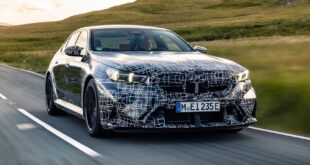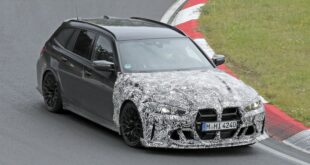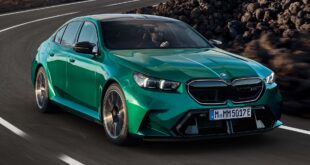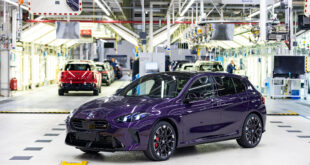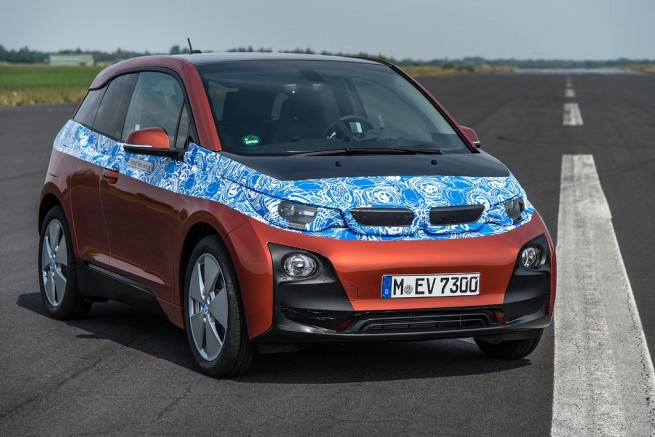 Top Gear reviews the BMW i3 before its release date and gives some interesting thoughts on how it drives. Its simplicity and lightweight nature are the strongest points, as revealed in this excerpt below:
Top Gear reviews the BMW i3 before its release date and gives some interesting thoughts on how it drives. Its simplicity and lightweight nature are the strongest points, as revealed in this excerpt below:
The i3 proves that for a car that ducks and dives around a city or cruises at dual-carriageway speeds, electricity can feel like a beautifully appropriate power source.
Of course, the lift is attached to the mains by a cable. A car doesn’t have that luxury (unless it can replace the mains by an onboard generator such as a range-extending engine or a fuel cell). So range for a battery car is a huge issue. The BMW has some mighty clever tricks to extend its range. Most of them revolve around lightness and reduced resistance to the air, and so you feel them the moment you drive.
Getting going is blissfully simple. A little horizontal drum sprouts from the steering column, with biggish rocker switch marked D-N-R, plus a button (start-stop) and another button (park). Funnily enough the engineers call that rocker switch the ’gearlever’, even though it’s not a lever and it does nothing to do with gears. All it does is switch the motor to run forwards or backwards. The transmission is a fixed single-speed reduction gar between the motor and the diff.
Assuming you want to depart forwards, you just press the start button, switch to D, and apply some accelerator. With utter smoothness, you roll away. There’s a distant synthesiser hum of the loudspeaker that warns pedestrians and cyclists of your motion, but barely any of the mechanical whines or electrical buzzes that most EVs can’t help emitting. Even in its first few metres, you’re struck how BMW had made the i3 sound refined and premium.
It’s ruddy sprightly too. That’s the lightweight part coming home to roost. With a high-torque 170bhp motor and a power flow uninterrupted by gearchanges, it’s at 62mph in 7.2 seconds. The addictive thing is the instant and proportional answer you get whenever you twitch your right foot. The same applies when you lift off, too. There’s strong regenerative braking from the motor even before you touch the brake.
Actually the motor braking, and the ability it gives you to drive with one pedal, is slightly less powerful than it was in the Mini E that BMW used to prove out the motor and batteries. That’s because the i3 is RWD, and if they gave it such powerful regenerative braking on the rear wheels it could actually get unstable on a slippery road.
Top speed is limited to 93mph because energy use rises sharply after that. Besides, rating it for more speed would probably need heavier brakes and cooling, which would dent efficiency at normal speed.
 BMW.SG | BMW Singapore Owners Community The Ultimate BMW Community – Established Since 2001
BMW.SG | BMW Singapore Owners Community The Ultimate BMW Community – Established Since 2001




